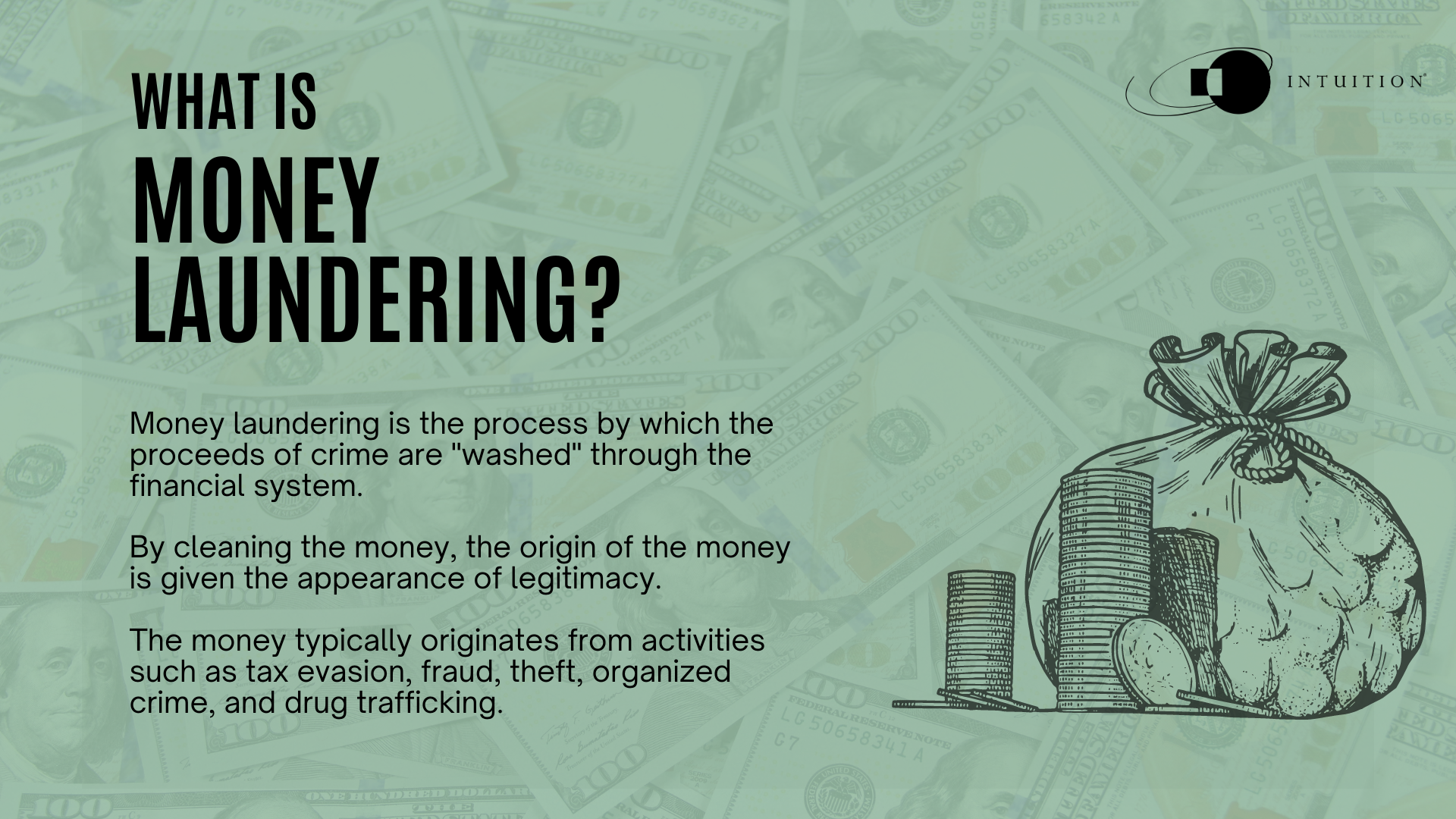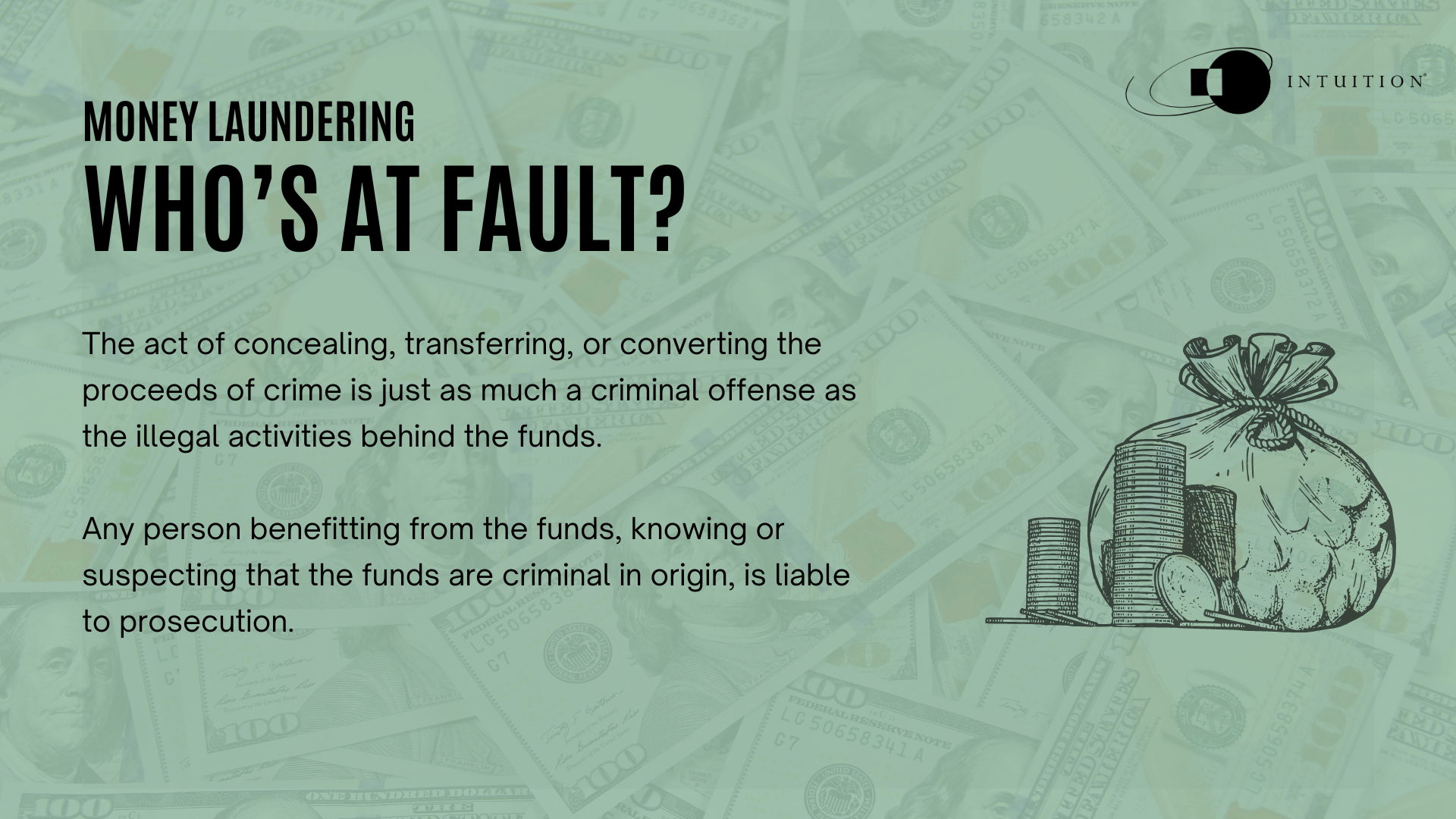Money laundering explained
International crime has grown exponentially over the years and continues to be a primary focus of the international community. One of the greatest challenges facing criminals is concealing the sources of their ill-gotten gains. Criminals must conceal the origins of their funds because legislation exists worldwide to allow law enforcement agencies to confiscate the proceeds of crime.
Money laundering (ML) can simply be defined as:
“the process by which criminals attempt to conceal the fact that their assets originate from crime.”
Criminals increasingly look to the financial sector to facilitate the movement of cash and help make them appear legitimate. Criminals are content to lose – on average – 30-40% of their illicit funds to associates who help them launder criminal proceeds.
Related articles:
What is money laundering?
Money laundering is the process by which the proceeds of crime are “washed” through the financial system.
By cleaning the money, the origin of the money is given the appearance of legitimacy.
The money typically originates from activities such as tax evasion, fraud, theft, organized crime, and drug trafficking.
The act of concealing, transferring, or converting the proceeds of crime is just as much a criminal offense as the illegal activities behind the funds.
Any person benefitting from the funds, knowing or suspecting that the funds are criminal in origin, is liable to prosecution.
The process of laundering money can be broken down into three stages, each of which could include numerous financial transactions.
The first stage is the placement of the cash proceeds of criminal activity into the financial system.
Common methods of placement include aborted transactions and smurfing.
In an aborted transaction, someone makes a payment, usually in cash, then cancels it and receives a refund into a bank account that they control.
In this way, they have placed the cash into the financial system.
To avoid suspicion, large deposits of criminal funds are often broken down into smaller amounts and deposited as a series of seemingly unrelated cash deposits, or through bank drafts. This is smurfing.
With cuckoo smurfing, criminal funds are transferred through the accounts of unwitting persons.
The second stage is the layering of multiple financial transactions to obscure the audit trail and to distance the money from its source.
This can involve the international movement of funds and/or complex ownership structures that disguise the identity of ultimate beneficiaries.
The third stage is the integrating of the money with other legitimate funds to give all the funds the appearance of legitimacy.
This can include the purchase of businesses or properties, in addition to luxury items such as artworks, jewelry, and high-end cars.
The disposal of such items can then be officially recorded, with the resultant funds looking as clean as other legitimate funds.

Case study: Money laundering
The crime
A personal banker at a leading US financial services firm faces a maximum penalty of 20 years’ imprisonment and a USD 500,000 fine after he admitted to working with others to launder drug money and transfer it to Mexico.
He was part of a scheme that laundered more than USD 19 million in narcotics proceeds on behalf of Mexico-based drug-trafficking organizations, including the Sinaloa cartel, one of the most powerful drug-trafficking syndicates in the world.
The scheme involved recruiting people to serve as funnel account holders at several US banks. The banker opened personal accounts at his firm knowing that they would be used to launder funds.
The process
Couriers picked up large amounts of narcotics proceeds in cash in several US cities. They deposited this in funnel accounts at banks controlled by the money laundering organization. This was placement.
The funds were then transferred by wire to shell companies based in Mexico. This was layering. The banker himself made multiple wire transfers from the funnel accounts knowing that the funds were the proceeds of illegal activity.
From Mexico, the funds were transferred to representatives of the Sinaloa cartel. This was integration.

Trade-based money laundering
Criminals are increasingly using cross-border trade to transform the financial proceeds of their crimes into seemingly legitimate commercial revenues, making them more difficult to identify. This is known as trade-based money laundering (TBML).
Under-invoicing
The exporter transfers money to the importer by issuing an invoice for an amount lower than the value of the goods transferred.
For example, an exporter wants to transfer money to an importer without the movement of cash.
- They can ship goods worth USD 2 million to the importer but invoice the importer for only USD 1 million.
- The importer can sell those goods for USD 2 million and pay the exporter’s invoice of USD 1 million.
- The importer then gets to keep the difference of USD 1 million between what they received for selling the goods and the amount invoiced.
Over-invoicing
This is the opposite of under-invoicing. The invoice amount is higher than the value of the goods transferred by the exporter.
In this case, the exporter gets to keep the difference between the amount it received from the invoice and the cost of the goods shipped.
Multiple invoicing
The exporter might send more than one invoice for the same deal. This enables the importer to make multiple payments without the exporter shipping more goods.
Under or over-shipment of goods
The amount shipped does not match the payments sent and received.
False description of goods
Goods are purposely mispresented on the relevant documentation which may benefit the exporter or importer.


